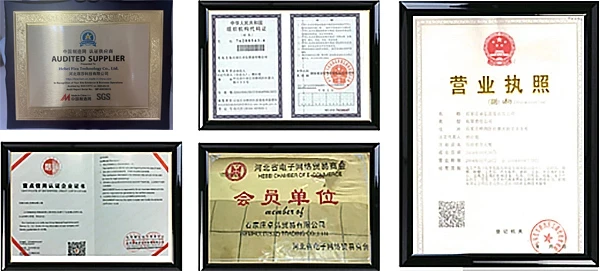



sodium bisulfate msds sheet
Understanding Sodium Bisulfate A Focus on Its MSDS
Sodium bisulfate, also known as sodium hydrogen sulfate, is a versatile chemical compound with the formula NaHSO₄. It is primarily used in various industries due to its acidic properties, making it an essential ingredient in pH adjustment, water treatment, and as an ingredient in cleaning products. Given its widespread use, understanding the Material Safety Data Sheet (MSDS) for sodium bisulfate is crucial for ensuring safe handling and application.
Chemical Properties and Composition
Sodium bisulfate appears as a white crystalline powder. It is hygroscopic, meaning it can absorb moisture from the air, and it is soluble in water. Its pH in aqueous solution is typically between 1.5 and 2.5, indicating its acidic nature. Sodium bisulfate is a strong dehydrating agent and can react with bases to form salts.
Health Hazards
The MSDS for sodium bisulfate highlights several health risks associated with exposure. It can be irritating to the eyes, skin, and respiratory tract. Direct contact with the powder or solutions can lead to symptoms such as redness, pain, and burning sensations. Inhalation of dust can cause respiratory issues, while ingestion may lead to gastrointestinal distress. It is recommended to wear protective equipment, including gloves and goggles, when handling sodium bisulfate to prevent any potential adverse effects.
Environmental Considerations
sodium bisulfate msds sheet

While sodium bisulfate is generally considered to be less harmful to the environment compared to other acids, it must still be handled with care. The MSDS provides guidance on disposal procedures to minimize environmental impact. It is advisable to avoid releasing sodium bisulfate into water bodies, as it can affect aquatic life by altering the pH of water.
First Aid Measures
In case of exposure, the MSDS outlines essential first aid measures. For eye contact, it is crucial to flush the eyes with plenty of water for at least 15 minutes and seek medical attention if irritation persists. If sodium bisulfate comes into contact with the skin, the area should be washed thoroughly with soap and water. Inhaling the dust requires moving the affected individual to fresh air and seeking medical assistance if respiratory symptoms occur. For ingestion, do not induce vomiting—seek medical help immediately.
Safe Handling and Storage
Proper handling and storage practices are vital for minimizing risks associated with sodium bisulfate. The MSDS recommends storing the chemical in a cool, dry place away from incompatible substances such as strong bases and combustible materials. Containers should be tightly sealed to prevent moisture absorption. Personnel should be trained in handling materials safely and equipped with emergency procedures in the event of a spill.
Conclusion
Sodium bisulfate is an important industrial chemical with numerous applications across various fields. Understanding its MSDS is crucial for ensuring safety during its use, highlighting the need for proper handling, storage, and emergency measures. By adhering to the guidelines provided in the MSDS, individuals and industries can utilize this chemical effectively while minimizing health and environmental risks.
-
Why Sodium Persulfate Is Everywhere NowNewsJul.07,2025
-
Why Polyacrylamide Is in High DemandNewsJul.07,2025
-
Understanding Paint Chemicals and Their ApplicationsNewsJul.07,2025
-
Smart Use Of Mining ChemicalsNewsJul.07,2025
-
Practical Uses of Potassium MonopersulfateNewsJul.07,2025
-
Agrochemicals In Real FarmingNewsJul.07,2025
-
Sodium Chlorite Hot UsesNewsJul.01,2025










